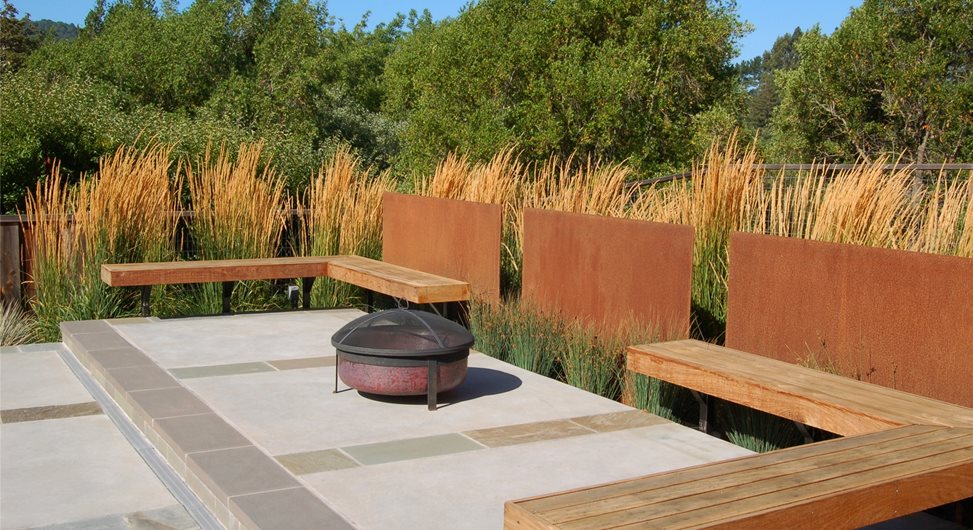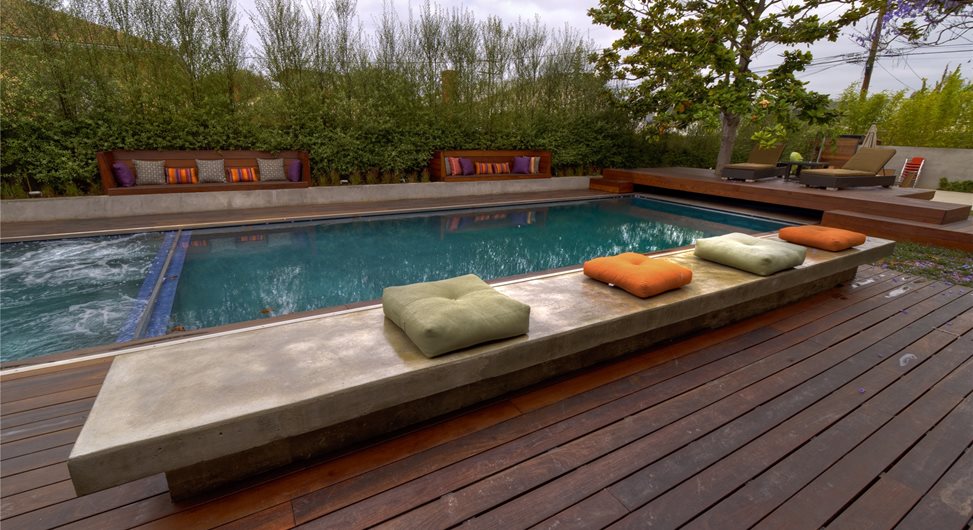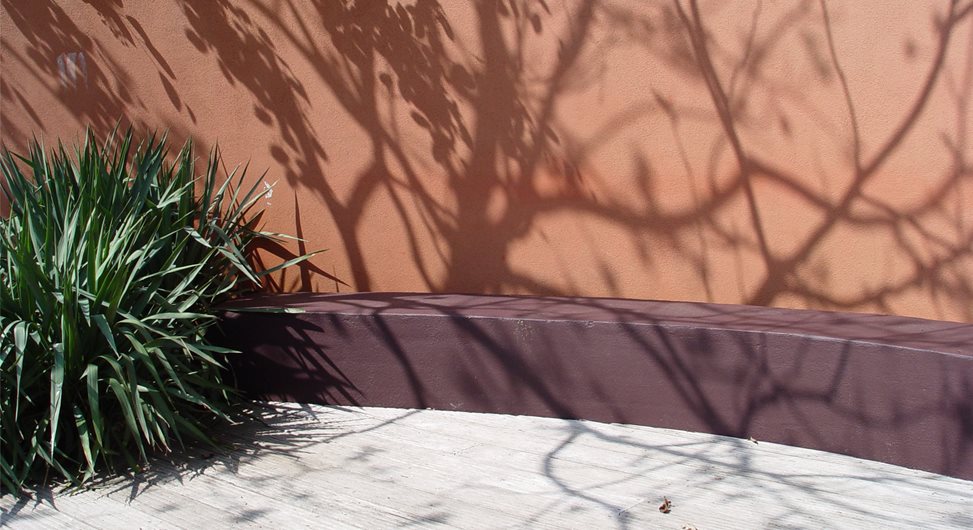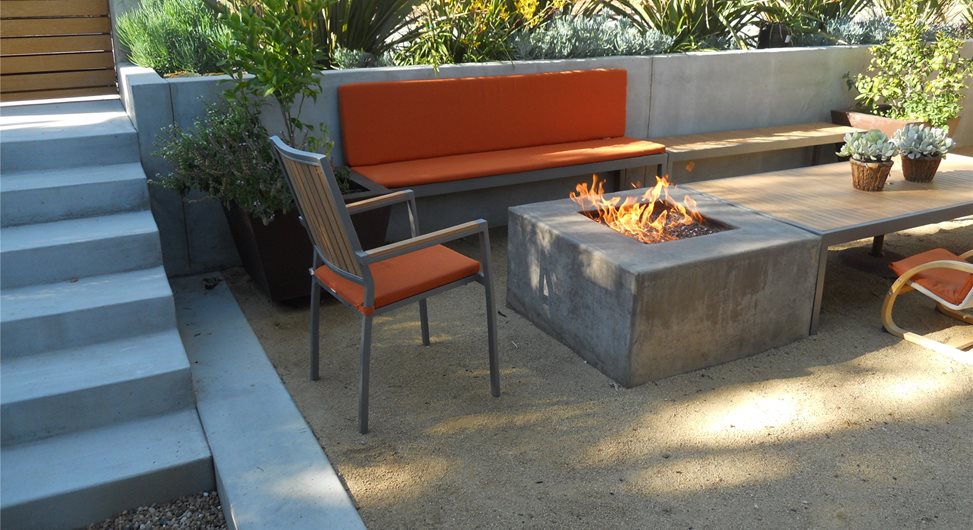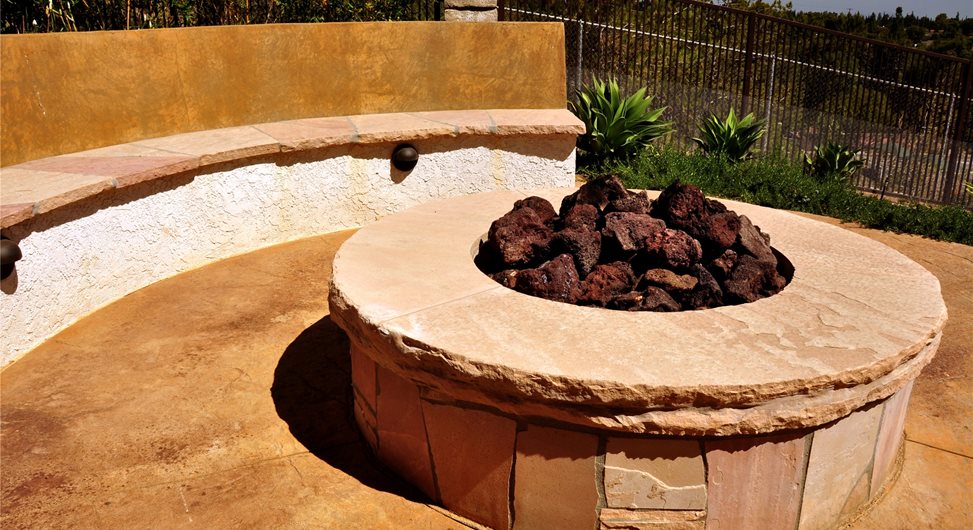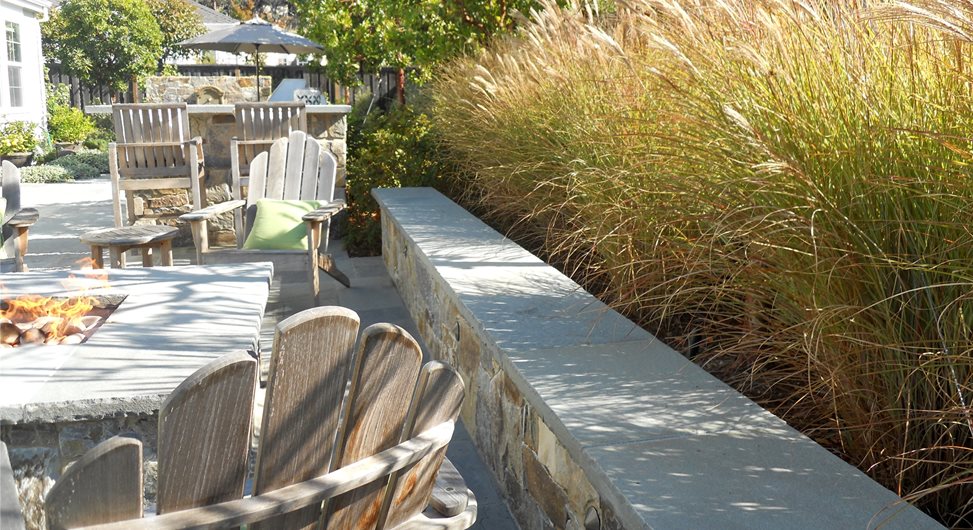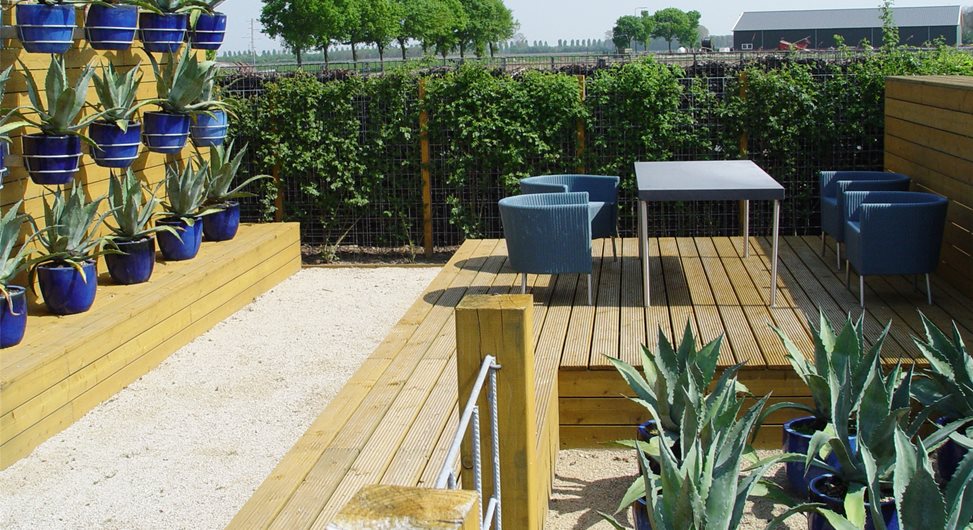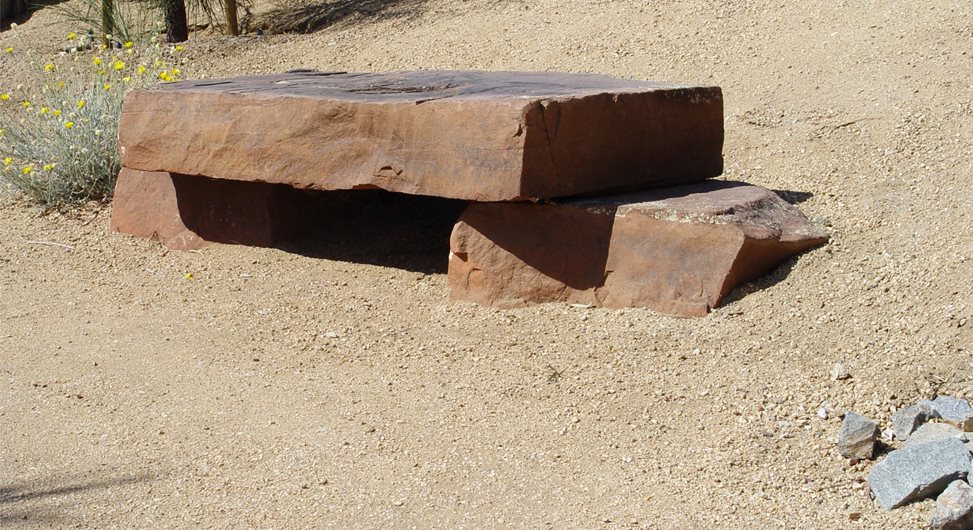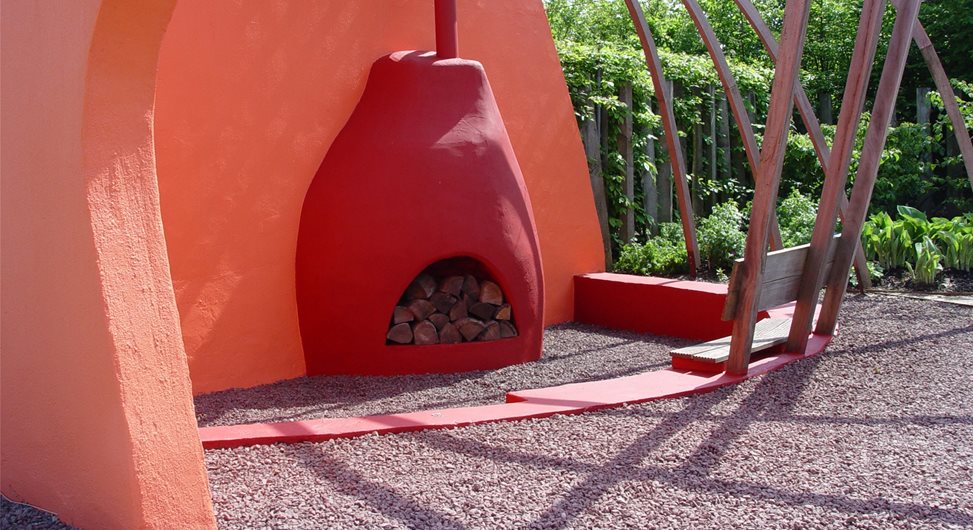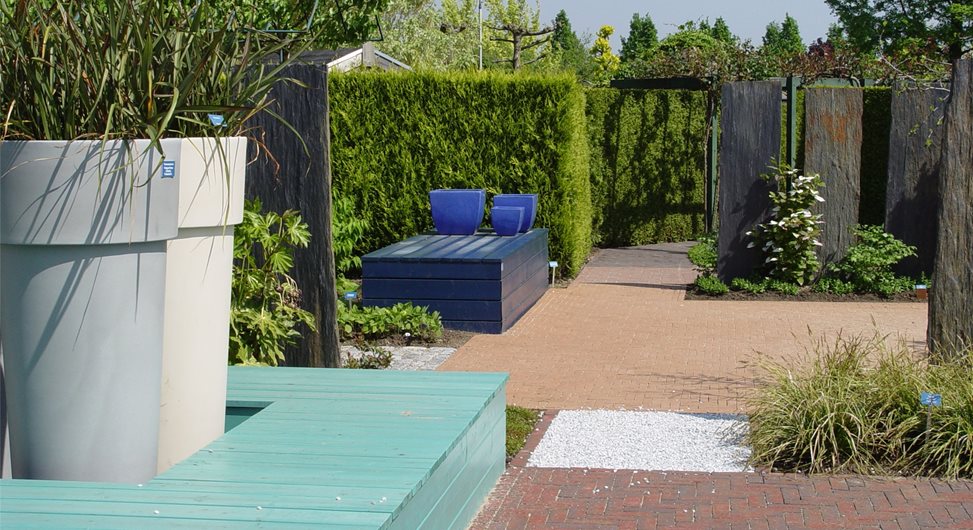Built-In Outdoor Seating
Four ways to add permanent seating to your patio, deck or gardenGood design seeks to maximize the usability of every element of a landscape. Often small variations in how a constructed part of the landscape is designed can double its value. In these days when such efficiency is essential, consider built in seating whenever you can.
If you invest in a wall or some other structural component, it's simple to design it with a secondary benefit: built in seating. These benches provide a place to sit all year around. They are particularly valued in colder climates where patio furniture is taken in for the winter and brought out again in spring. Problems arise in between fall and spring when there's nowhere to sit on the warm clear days when it's comfortable to read outdoors or just enjoy the sun.
Built in seating is also a spatial problem solver. In small landscapes, condo patios or wherever there's insufficient area for furniture, a built in bench offers many options. Slide a dining table up to it and you'll need half as many chairs without sacrificing a single square foot. For spaces to narrow for furniture, built in seating can sometimes prove the only solution for making a comfortable place to relax. For those who don't want to fuss with gardener furniture at all, built-ins are a great alternative.
Integrating built in seating is not difficult if you are planning walls or raised planting areas in the landscape. These structures can be easily adapted to double as seating. To make them work properly, use our guidelines to ensure they're comfortable, attractive and spatially efficient.
1. Seatwall
Any time there's a low wall in the landscape, it can easily double as a seatwall. A seatwall is simply a low wall from 18" to 30" in height, which acts as a bench. What defines a wall as a seatwall is a comfortable flat top. Design of a seatwall must consider the user's comfort. The natural width of a concrete block wall or poured concrete wall core is not sufficient for comfort. Add a foot-wide cap to the top using masonry that's comfortable to sit on and it becomes the perfect seat. Here are some tips to make it work even better:
- The cap should be made of a smooth material that won't snag clothing.
- Keep mortar joints narrow so the sharp sand won't stick up above the cap.
- Utilize a bull nose cap masonry unit to avoid sharp edges.
2. Inset Seating
No matter what you're building, be it a garage wall that's adjacent to the patio, an outdoor kitchen or a privacy wall, there's an opportunity to create inset seating. This technique jogs the wall back from it's original alignment to create a recessed seating area or "nook". If the wall is tall enough, the seating area enjoys a comfortable back rest. If it is a shorter wall the backrest may be absent. Naturally there must be sufficient space behind to accommodate the jog, so this is not the most spatially efficient choice. It is the most versatile offering, with just one bench or all three sides enclosing a conversation area. If the seating is designed to be deep, with a seat two or more feet wide, it becomes a place to recline too. Inset seating where the exposure is correct can become a warm sun catcher in the winter.- Pro Tip: When seating is inset, be aware of how comfortable the back rest will be. When the back wall is slightly sloped away from the seat it becomes more comfortable to lie back against it than if it was straight up and down.
3. Bolt On Seating
Where a wall may be too tall to be a seatwall and the adjacent spaces too narrow for inset seating, the alternative is bolt-on seating. This is often used in public parks and urban plazas where bolt-on benches can be easily removed for replacement, restoration or repair. They are most often anchored into concrete, block or stone walls, particularly those with irregular or split face textures. This is great for remodels where existing walls must remain as is, making a perfect opportunity for a bolt-on solution.
4. Natural Boulders
In landscapes that utilize a great deal of stone work, outdoor seating can be achieved when the proper stones are used. Boulders with a flat top can become convenient seating areas. They make ideal overflow seating for large parties. When integrated into Japanese garden style they offer a place to sit without spoiling the carefully crafted landscape. Key to all boulder seating is rock shape, because it must be set into the ground just so to keep the surface flat and at the right height for seating.
Another option is to use large slabs of flagstone set upon multiple supporting stones. This eliminates the need for transportation of large boulders because each one is light enough to hand carry into place. A few well-placed stones can provide a beautiful seating option to your naturalistic outdoor living scheme.
Design Details
There are just a few details to ensure you get the most out of this kind of seating opportunity. Remember that concrete and metal are not comfortable to sit on without a cushion. These materials can become very hot and very cold in particular seasons. This is why many benches have wood slats for seating. The other option is to design to the dimensions of standard outdoor cushions. This allows you to purchase store bought cushions rather than having custom cushions made from scratch. With standard dimensions, you can select your fabrics and colors, using the mass market inner cushions. You can also buy replacements at the store for instant upgrade for a party or special occasion without the long wait of custom jobs.

 Backyards
Backyards
 Front Yards
Front Yards
